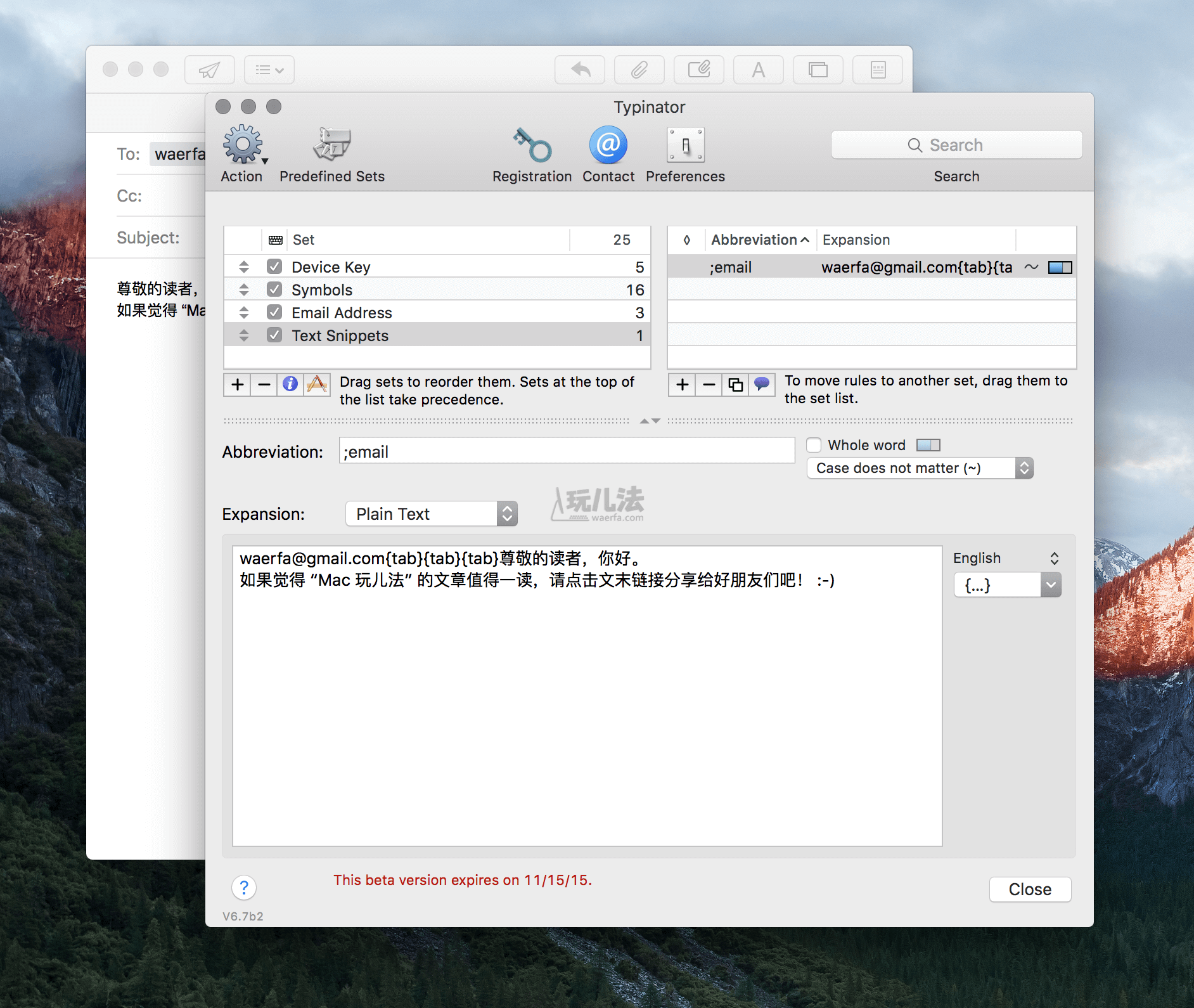

#Typinator ios free#
Don't forget to check out our " Today in the App Store" post that singles out today's best free apps, new apps, and app updates in the iOS App Store. ~ Paul Ingraham ( ) time to save some of that hard-earned cash with our Daily Deals, featuring exclusive TUAW Deals, a handy list from Dealnews and our own handpicked iOS and OS X selections. I am a health writer in Vancouver, Canada, best known for my work debunking common myths about treating common pain problems on. MacOS Catalina still behaves exactly the same way. So the system shorthands are always with me in that app, and several others. Even if it was practical to turn text replacement off in every record - and it really isn’t - it doesn’t stick. But in some apps, like my bibliography manager, BibDesk, almost all work is done in “fresh” windows.

For instance, in the Messages app (which I use heavily), all discussion threads inherit the Text Replacement state of a single window, which is preserved when the app is quit. Some apps have a single window and the text replacements can be turned off and I never have to think about it again. Only the Text Replacements option has this zombie like stubborness in new tabs/windows. quote educating) persists in new tabs/windows exactly as you’d expect it to. I can uncheck that text replacement option, but it returns in every single item window.Īlso, the state of the other Substitutions options (e.g. This seems like it should work for Safari at least, but it does not:ĭefaults write -g WebAutomaticTextReplacementEnabled -bool falseĪ bibliographic record in BibDesk. and if there’s a “defaults write” that does the trick, it eludes me. There is no master switch in System Prefs → Keyboard → Text. Edit → Substitutions → Text Replacement (wherever it’s available) affects a window/tab, not the whole app, and so it’s always on by default in new tabs and windows, and this default enthusiasm for replacing text cannot be changed. It took me quite a while to figure this out. Surely I can just disable them on macOS? There has to be a master switch! You’d think so, but this is where things get weird a bit weird. Those shorthands also often conflict with Typinator: there are a some things they both try to replace simultaneously, which does not go well. Shorthands that tuned for iOS are much too easily triggered accidentally on a Mac, where there’s 1000× times more typing and data entry of every kind. The iOS text replacements are unwelcome on my Macs because of all the false positives, one of the main bogeymen of any shorthand system. Safari and Notes are where I usually encounter them, but they will also appear in any app that uses vanilla text-entry. I can’t just delete them on my Macs, because that would delete them everywhere. My simpler iCloud-synced shorthands are vital for productivity on my iOS devices, but they are unwelcome on macOS, and effectively cannot be disabled. I use two kinds of shorthands: a powerful system consisting of many hundreds of terms powered by Typinator on my Macs, and a small, simplified subset of dozens of shorthands that I use exclusively on my iThings… or, rather, I wish I could use exclusively on my iThings. The worst technical problem I’ve run into is a feature baked right into macOS. Okay, I wouldn’t exactly put any money on it. Bloopers abound! So many that it constantly casts doubt on the value of the whole enterprise, but I’m playing a long game and I’m convinced it’ll be worth it in the end.

Creating and learning effective shorthands is a fascinating language/memory/technical challenge with many unintended consequences and wrong turns. I’ve put a lot of effort into shorthands over the last fifteen years - typing things like “angtft” to get “ ain’t nobody got time for that!” - and I’ve been up to my eyeballs in a major renovation of my library of abbreviations over the last couple months.


 0 kommentar(er)
0 kommentar(er)
